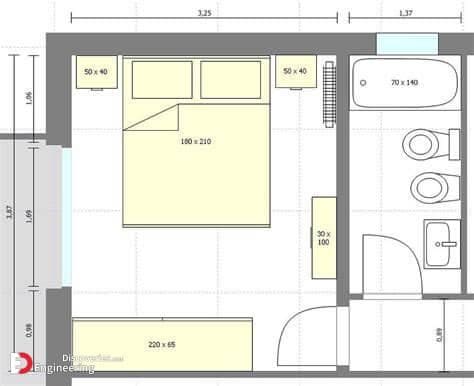The global pandemic in 2020 hit brick and mortar stores hard, but it provided a significant boost to ecommerce. Stores that had once used their sites as only auxiliary sale locations turned their online homes into the hub of their brand; sellers and service providers without a virtual location quickly put together ecommerce sites.
At first, it was simply a matter of surviving — but the trend towards ecommerce websites shows no sign of slowing down.
Now more than ever, brands need to focus on the customer experience (CX) in order to draw in consumers and make their ecommerce sites stand out from the others.
Here are nine important things you can do to improve the design of your ecommerce brand’s site and boost CX across the board. They address different aspects of design: visual, back-end, and content.
Visual:
Color choice
Cohesive branding
Clean layout
Back-end:
Super-quick load times
Internal linking
Mobile-friendly
CX-oriented content:
Product hierarchy
Ease of navigation
Ease of feedback
Color Choice
Why start with color choice? It all comes down to what the people want, and making sure you can give it to them.
66% of website visitors point to visually appealing web design as a major factor in their continued interest in a site. This isn’t too surprising; we like things that are visually appealing, and if something is pleasant to look at, it’s more likely that we will invest our time and attention there.
However, contrast this statistic with the experience that most of us have had at some point — the experience of visiting a website with such a poor color palette, either low contrast or too-sharp contrast, to the point that the content was difficult, if not downright impossible, to read.
Put yourself in the shoes of the visitor to your site. Have you chosen your colors in a way that is not only aesthetically appealing, but which boosts the user experience? If not, this is the time to reassess your choices.
Cohesive Branding
Cohesive branding across any website, social media account, and marketing materials is important for any brand, but in the world of ecommerce, it can make an even bigger impact.
Why? Because, as we discussed, there are more ecommerce website out there now than ever before, and the arena continues to grow. This means a rash of hastily-put-together sites, often without good brand identification. You want your visitor to know exactly where they are, with no case of mistaken identity.
That likely includes the aesthetic decisions you make in your design, from your colors and fonts to your inclusion of your brand logo on each page of the site. If you haven’t got one yet then ZillionDesigns’ free logo creator is the place to get one for your business. A well-branded site boosts recognition for your visitors, and in turn boosts loyalty to your brand. It also sets a standard for reliability and brand symmetry.
Clean Layout
A clean, simple layout is a joy to behold — and simple web design tends to be a fan favorite. Simple = better is a formula that has been followed for years, to great effect.
Why is a clean layout a boost to CX? Simply put, it’s user friendly. Allowing for plenty of negative space, making sure that individual elements have room to breathe, makes for an easier viewing experience. It cuts down on the elements that your visitor is trying to perceive all at the same time; give them one thing at a time to look at, and you’ll see your engagement go up.
Image Source: Deliverr
A clean layout also allows for your important information to stand out. Whether that’s your product photos or your call to action, make sure that you’ve oriented the display in a way that the viewer will naturally want to read down the page. If you’ve included an element in your design that doesn’t serve an immediate purpose, such as a placeholder for later products, take it out.
Simple, clean design keeps your customer from becoming overwhelmed, and helps them to focus on the point of their visit.
Super-Quick Load Times
Load times are often cited as one of the major factors in what makes a successful website design. They’re also cited as something that will quickly lose traffic, if the load time is too long.
Google’s analytics algorithm suggests that load times of three seconds or less are optimal for keeping your bounce rate low; in fact, the faster, the better. The fact is, web consumers have become more impatient as design and efficaciousness have improved over the last ten years. We want to see the site, and we want to see it now.
This can be tricky with ecommerce websites, which often function as an online product roster or brochure. The more and larger photographs and images you have on your site, the balkier the load times will be.
To cut down on that time, optimize your images, and choose thumbnails for product photos when possible.
Internal Linking
Whether you’re suggesting products or content related to the products, internal links are an excellent way that you can improve the user experience.
Is your customer choosing a product that works well with others, or which requires other products to be used? Make sure that those are suggested links.
Is it a difficult product to use, or can the use be optimized with some expert tips? Include links to articles or videos that will start them off on the right foot.
Image Source: NeilPatel
Does their search history on the site show that they may be interested in other products or services? Suggest these to them.
Internal links are a way to make the search load easier on your customer — as well as improve their engagement with the site, boost sales, and ultimately make the customer experience that much better.
Mobile-Friendly Responsive Design
More and more consumers are turning to mobile devices to make purchases. The thousands and thousands of retail brand apps make it ever easier, and often, what we want to buy is just two taps away from showing up on our doorstep.
Consumers not only expect that a site will be designed for apps and smartphone access, but it makes a hefty impact on their willingness to engage with that site. 74% of consumers are more likely to go back to a site if it is proven to be designed with mobile-friendly responsiveness in mind.
Image Source: iStock/oatintro
Adaptive design makes it easier to search for, locate, and purchase items on smartphones and tablets through use of stripped-down site design, mobile-oriented search boxes, hamburger menus, and thumbnail images.
Designing a mobile-friendly site or an app may add a little time, effort, and investment to your ecommerce website design, but with more than half of consumers who shop online choosing to do so via their smartphones, ignoring responsive design is too big a risk for an ecommerce brand to take.
Product Hierarchy
We mentioned internal linking that reflects the interests of your consumer, but there’s another aspect to this: telling them about the most popular items right up front.
Many ecommerce website designs include a slider or links on the main page to pinpoint their best sellers. Not only is this a good idea for your consumer, it also serves as an excellent way to upsell products and highlight new services.
Consider updating your “best seller” list frequently, according to actual sales, seasons, events, and so on.
Easy Navigation
Navigation is key for a successful website design. If you’ve ever gone to a site and found yourself unable to locate the information you wanted, you know how frustrating bad navigation can be!
It’s only natural that an easy, simple, obvious navigation system with a low learning curve would improve your CX. But it also improves the overall success of your website as a whole, especially in the world of ecommerce.
Of course, it isn’t just about the navigation bar or the menu, for an ecommerce web design. An integral part of ecommerce is smart search. Make sure that the search bar is easy to find, and incorporate a sensitive search engine that can give suggested keywords or phrases if no products are found.
Make It Easy To Give Feedback
A final key to improving your CX on your ecommerce brand site is this: listen to the people!
Building an ecommerce brand requires adaptability and responsiveness, especially to feedback from your customers. In order to adapt to that feedback, though, you need to ensure that it’s easy to give.
Include contact information such as email and phone number in the footer of every page. Invite them to reach out with questions, comments, concerns, or complaints. If it makes sense for your brand, use a smart chatbot to handle the initial comments or questions of your visitors, and be ready to take over when necessary. Send out an email to acknowledge their comments and reassure them that you’ll get back to them as soon as possible.
Reward your visitors for engaging with your brand. It’s an excellent way to build brand loyalty — and it’s ideal for improving the customer experience on your ecommerce website.
Need an ecommerce website design?
The post How to Improve Your Ecommerce Website Design with Customer Experience appeared first on ZD Blog.



